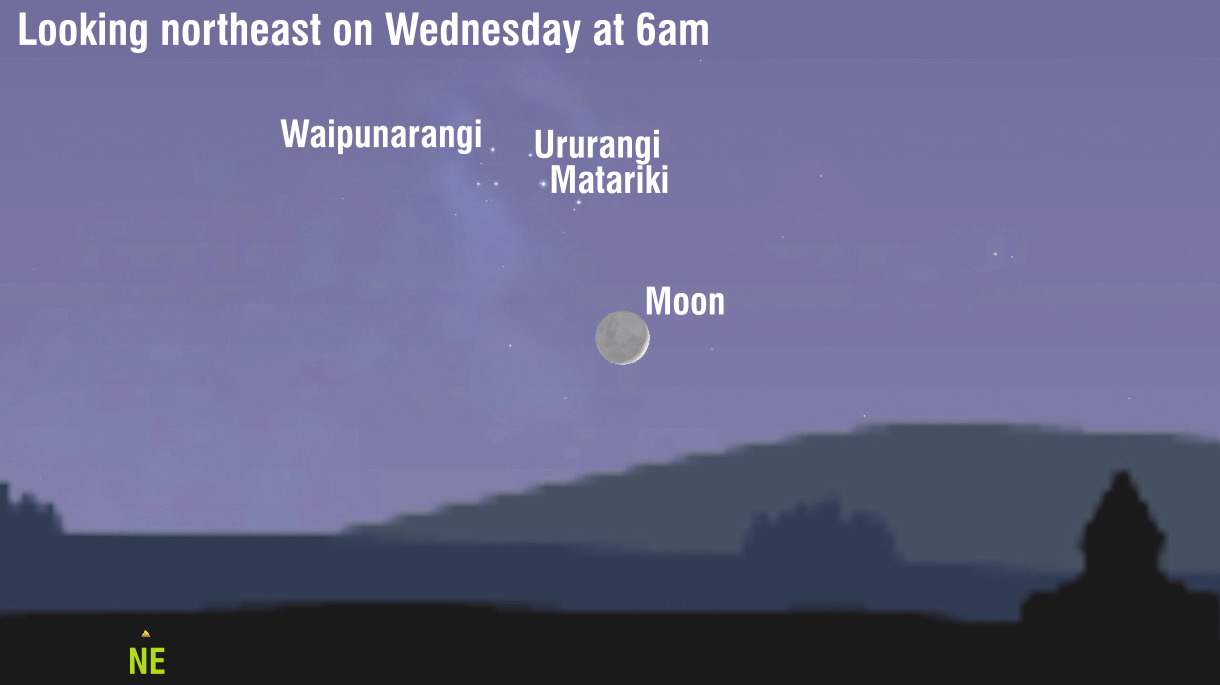
On Wednesday, the Moon will grace the sky as a delicate waxing crescent. Rising shortly after 5.30am, our planet’s sole natural satellite will slowly emerge from the horizon, making for a real sight to behold. Despite only a fraction of its surface being illuminated, those equipped with binoculars or, better yet, a small telescope, will be treated to breathtaking views of Oceanus Procellarium, the Ocean of Storms, on the Moon’s lower right side. Keep an eye out for the dark, circular crater Grimaldi, positioned near the centre of the lunar crescent. And, adjacent to the bright lunar crescent, the rest of the Moon will be softly illuminated by the ethereal Earthshine.

Astronomers refer to a celestial close approach as a conjunction. In this case, the Moon and Matariki will be separated by just over a degree. The close celestial pairing of the Moon and Matariki should provide an opportunity for some beautiful photographs as the sky brightens.
With the new Moon occurring on Saturday morning, we are entering the "dark of the moon," the time of month when the skies are darkest and best for observing.










